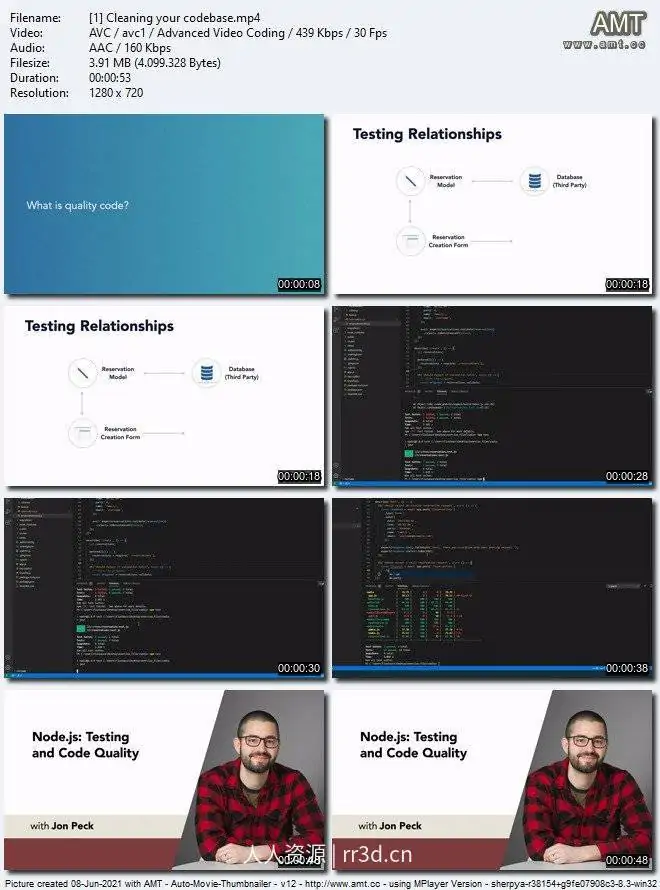 大多数软件工程师都会同意干净的代码比凌乱的代码更容易维护,但它到底是什么样子的,如何清理凌乱的代码?在本课程中,Jon Peck 展示了如何在您的 Node.js 应用程序中衡量质量、实施测试和衡量代码覆盖率,并使用一个完整但有问题的餐厅预订应用程序来说明这些概念。Jon 首先回顾了 JavaScript 基础知识以及测试和代码质量概念。然后他解释了如何使用 linter 查找可疑代码;探索不同的测试框架及其组件;并展示了如何使用测试替身隔离测试代码,然后使用Spy和模拟进行验证。Jon 通过展示如何在整个代码库中生成代码健康报告来结束课程。
大多数软件工程师都会同意干净的代码比凌乱的代码更容易维护,但它到底是什么样子的,如何清理凌乱的代码?在本课程中,Jon Peck 展示了如何在您的 Node.js 应用程序中衡量质量、实施测试和衡量代码覆盖率,并使用一个完整但有问题的餐厅预订应用程序来说明这些概念。Jon 首先回顾了 JavaScript 基础知识以及测试和代码质量概念。然后他解释了如何使用 linter 查找可疑代码;探索不同的测试框架及其组件;并展示了如何使用测试替身隔离测试代码,然后使用Spy和模拟进行验证。Jon 通过展示如何在整个代码库中生成代码健康报告来结束课程。
MP4 | Video: h264, 1280×720 | Audio: AAC, 44.1 KHz, 2 Ch
Skill Level: Intermediate | Genre: eLearning | Language: English +srt | Duration: 4h 21m | Size: 1 GB
Most software engineers would agree that clean code is easier to maintain than messy code, but what exactly does that look like, and how do go about cleaning up messy code? In this course, Jon Peck shows how to measure quality, implement testing, and measure code coverage in your Node.js apps, using a complete but buggy restaurant booking application to illustrate the concepts. Jon first reviews JavaScript fundamentals and testing and code quality concepts. He then explains how to use linters to find suspicious code; explores different testing frameworks and their components; and shows how to isolate your code for testing using test doubles, then verify with spies and mocks. Jon wraps up the course by showing how to generate reports on code health across your entire codebase. Along the way, he provides challenge and solution videos so you can test your knowledge of each section before moving on.

